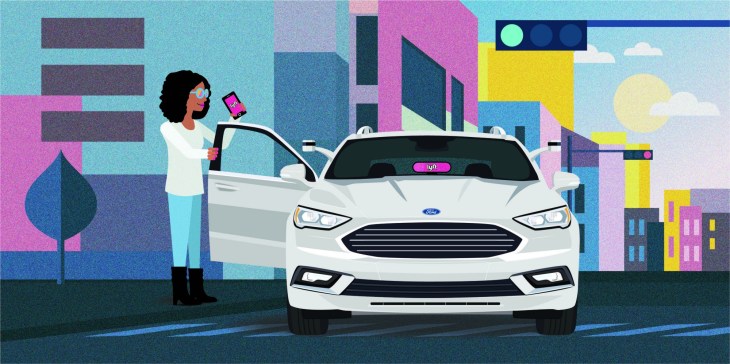Ford and Lyft are working together on self-driving vehicle technology, but the focus of the collaboration is around Lyft’s positioning of itself as an open platform for future autonomous on-demand vehicle services, and likely not something that will do much to accelerate the pace at which self-driving cars are able to be safely deployed on roads.
The focus of the partnership is on laying the groundwork for a future time when Lyft users will be able to open the app and call a car, which will then come from a range of different providers operating their own driverless fleets. It’s the main purpose behind Lyft’s launch of its open platform for autonomous tech, and one of the driving motivations for its Level 5 Autonomous driving center in California.
But the Ford and Lyft partnership isn’t exclusive and it’s unlikely to be unique – in fact, it’s probably going to be something that proves a model for a range of similar partnerships across networks in future. On-demand vehicle service operators could, in fact, become the cable and internet providers of the future, operating platforms that work with a range of both individually, and fleet-operator owned vehicles.
Ford is also unlikely to give up entirely on the idea of running its own autonomous driving operation – rival GM seems to be preparing for that eventuality itself, having built its own ride hailing app and network for use in San Francisco through self-driving subsidiary Cruise, which is offering on-demand autonomous rides to its employees in a limited beta test.
The automaker stands to learn a lot from operating both human-driven and self-driving test vehicles on Lyft’s network, both of which it plans to do as part of this new partnership, because it has precious little experience with operating a ride-hailing service, while Lyft has plenty. It’s going to be able to glean a ton of useful information about user experience and ride planning from the partnership, regardless of what happens in the future with any commercial partnerships.
As for helping get self-driving cars on the road, this could perhaps accelerate progress – but the fact remains that we’re still quite a ways off from fully autonomous vehicles operating without humans behind the wheel on public roads in any kind of widespread way. And the limiting factors are on the self-driving technology side, not the network piece of the equation.
Meanwhile, I’d expect that Ford won’t be the last automaker to make this kind of arrangement with Lyft – there’s little to be lost from not joining up with its platform now, and a lot to be gained in terms of planning for a future where mobility looks quite different than it does today.
